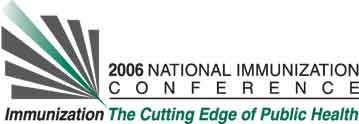Tina R. Carbajal1, Rachel H. Civen
2, Teresa Maupin
3, and Laurene Mascola
1. (1) Acute Communicable Disease Control Program, Los Angeles County Department of Health Services, Varicella Active Surveillance Project 44900 N. 60th Street, Lancaster, CA, USA, (2) Acute Communicable Disease Control Program, Los Angeles Department of Health Services, 313 North Figueroa Street Room 212, Los Angeles, CA, USA, (3) Varicella Surveillance Project, County of Los Angeles Department of Health Services, 44900 N. 60th Street West, Lancaster, CA, USA
Learning Objectives for this Presentation:
By the end of the presentation participants will be able to understand how the validily of self-reported varicella disease status compares to varicella zoster virus(VZV) IgG antibody results.
Background:
Pre-varicella vaccine licensure susceptibility data estimated that 3.7%-5.9% of adults, 20-29 years of age, remain susceptible. The antenatal period provides an excellent opportunity for assessing varicella susceptibility among women of childbearing age and postnatal follow-up visits provide opportunity for varicella vaccination to susceptible women.
Objectives:
The study objective was to assess validity of self-reported varicella history compared with VZV IgG antibody results in a prenatal clinic.
Methods:
From March 2003 through March 2004, two public prenatal clinics enrolled women into a prenatal varicella susceptibility study. Both clinics were located in Antelope Valley, California. At the first prenatal visit, clinic staff invited women to be screened for VZV immunity and to complete a standardized questionnaire. Informed consent was obtained. Serum specimens were sent to CDC lab for VZV susceptibility testing using a whole cell IgG ELISA. Enrollees with negative titers were offered varicella vaccine after delivery.
Results:
Of 835 eligible women from two clinics, 530 (63.5%) were enrolled. The median age was 24 years (range:14-42). The racial/ethnic distribution was 47 (8.9%) African American, 78 (14.7%) Caucasian, 395 (74.5%) Hispanic, and 10 (1.9%) unknown. Among enrollees, 227 (42.8%) were US born and 298 (56.2%) were non-US born. Overall, 2.8% (95% CI: 1.6-4.6) screened were susceptible to varicella. The sensitivity and specificity of self-reported history of varicella disease versus VZV serology was 59.9 % (95% CI: 55.5-64.2) and 93.8 % (CI: 69.8-99.8), respectively, and the predictive value of the positive test and predictive value of the negative test was 99.7% (CI: 98.2-100) and 6.8% (CI: 3.9-11.0), respectively.
Conclusions:
Sensitivity and specificity results comparing self-reported VZV history to VZV serology support VZV laboratory screening for varicella during prenatal visits.
See more of Posters
See more of The 40th National Immunization Conference (NIC)

